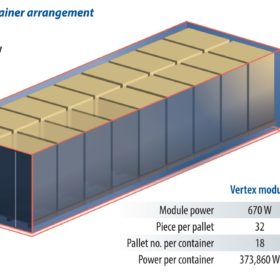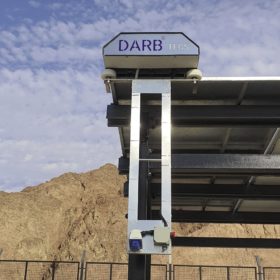Archaeologists dig solar
Solar’s benign infrastructure means it might be able to play a role in key areas where archaeological interests need protection. With minimal land disturbance and an installation process that can be adapted to any finds, solar parks may protect valuable sites. But are those claims overblown? Max Hall digs into the issues.
On track for cost reduction
Large-format modules have become the industry standard for new utility-scale solar installations, with the conversation now shifting to the optimal wafer size: 210 mm or 182 mm. However, some difficulties persist in switching to the new standard, and a significant portion of the effort has fallen to tracker manufacturers. To gain a better perspective on what has changed, pv magazine’s Tim Sylvia sat down with three of the largest tracker manufacturers – Trina Solar, Nextracker, and Array Technologies – to discuss the common themes of availability, optimization and standardization.
Dealing with dust
Sand and dust are a PV plant operator’s worst nightmare. Performance losses due to soiling, or “the dust effect,” are a cause for innovation among O&M providers, particularly in dry and dusty regions that are otherwise ideal locations for large-scale solar installations. Yazeed Al-Mousa examines the latest robotic cleaning solutions, as well as the software and sensors that help plant operators with the tricky economic decision of when to actually start cleaning.
Liquid light
Once thought of in a niche sense, the solar-water nexus is a rapidly expanding network of applications. They include practical tools capable of solving persistent issues like water scarcity, as well as newly pressing issues like overcoming the water challenge of green hydrogen production. Blake Matich looks at such applications here in Australia and abroad.
V2G driving grid changes
The uptake of EVs in the years ahead will add up to staggering battery capacity, mostly sitting idle on driveways. The two-way flow of electricity from EV batteries, known as vehicle to grid, could not only enable power systems to rely on intermittent renewables, but could also be the trump card for network operators to respond to grid disturbances. However, there are still a few catches to be worked out, as Marija Maisch explains.
Indium: sustainability, not supply
The supply of indium, both for layers in silicon solar cells and some thin-film PV technologies, is increasingly seen as a future potential bottleneck that solar and other industries relying on the material will have to manage. Resolving indium supply concerns may be a case of rethinking mining waste and recycling, reports Ian Morse.
HJT for high performance
With PV cells the next focus for boosting power output, heterojunction is seeing production capacity increases. Its advantages are numerous, not least its favorable temperature co-efficient, says Recom Technologies CEO Hamlet Tunyan.
Expansions in n-type
The past 12 months have been a turbulent time for PV manufacturing. Rapid and impressive developments in technology have been accompanied by price increases up and down the supply chain, and energy shortages weighed on production in the second half of the year. Chinese n-type module manufacturer Jolywood is now pressing ahead with ambitious expansion plans despite the disruption. pv magazine publisher Eckhart K. Gouras and editor Mark Hutchins recently caught up with Cathy Huang, European sales director at Jolywood, to discuss the company’s plans to bring n-type TOPCon technology into mainstream production.
pv magazine test: Introduction to LETID testing
Together with our test partners, we have decided to add LETID testing to our set of benchmarking tests for PV modules, as the industry has improved its knowledge about the risks and mitigation of this relatively new mode of PV module degradation. George Touloupas, senior director of solar and storage at CEA, provides an update.
pv magazine test: November 2021 results
The November 2021 results have arrived from the pv magazine test field in Xi’an, China, alongside analysis from George Touloupas, senior director for solar and energy storage at CEA.










